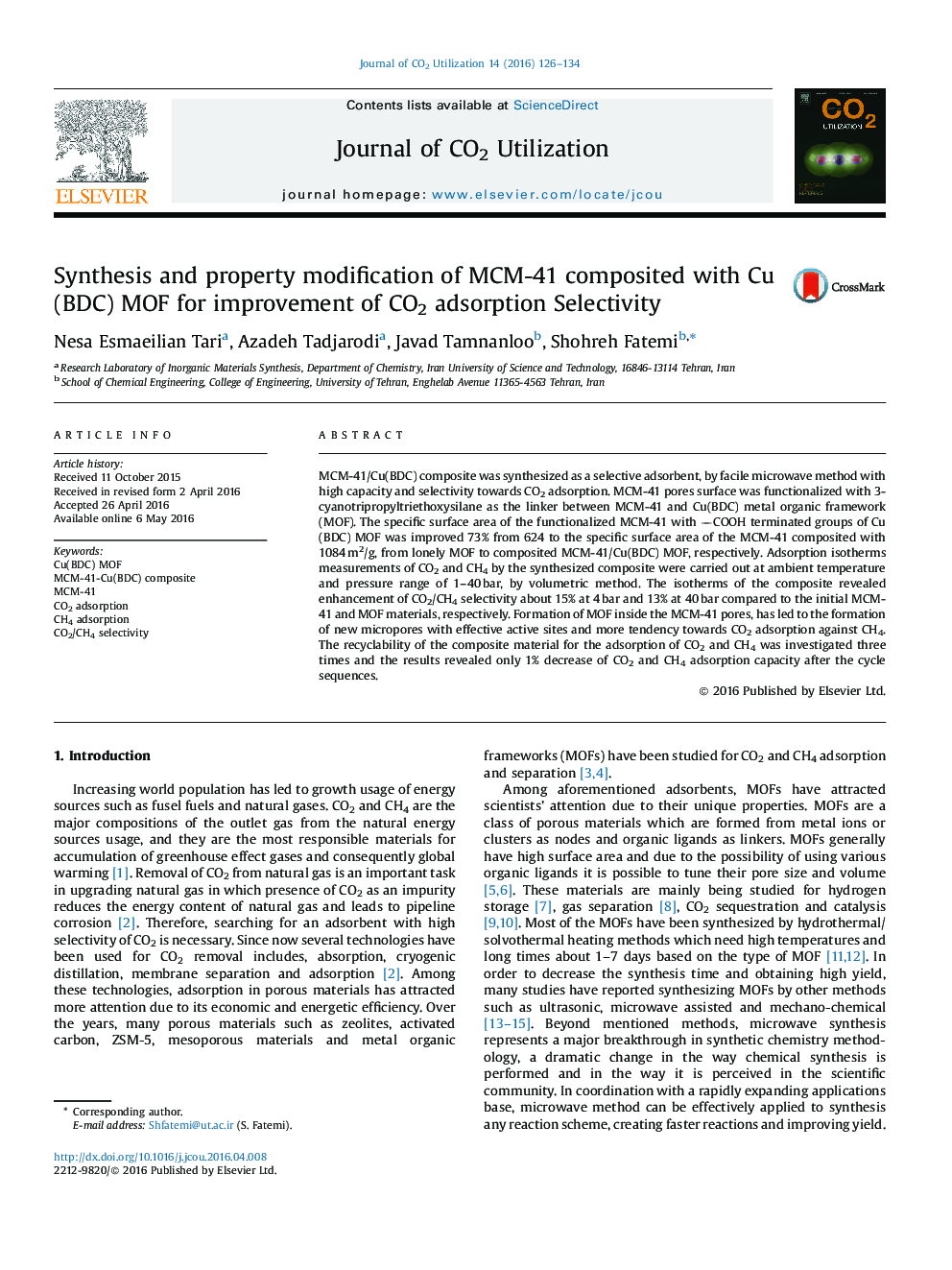| Article ID | Journal | Published Year | Pages | File Type |
|---|---|---|---|---|
| 63552 | Journal of CO2 Utilization | 2016 | 9 Pages |
•Synthesizing new composite based on MCM-41 and Cu(BDC) MOF with high surface area.•The synthesized composite has high adsorption capacity and selectivity toward CO2 against MCM-41 and Cu(BDC) MOF lonely.•The composite recyclability was investigated and its superior capability was revealed as physical adsorbent for adsorbing and separation of CO2.
MCM-41/Cu(BDC) composite was synthesized as a selective adsorbent, by facile microwave method with high capacity and selectivity towards CO2 adsorption. MCM-41 pores surface was functionalized with 3-cyanotripropyltriethoxysilane as the linker between MCM-41 and Cu(BDC) metal organic framework (MOF). The specific surface area of the functionalized MCM-41 with COOH terminated groups of Cu(BDC) MOF was improved 73% from 624 to the specific surface area of the MCM-41 composited with 1084 m2/g, from lonely MOF to composited MCM-41/Cu(BDC) MOF, respectively. Adsorption isotherms measurements of CO2 and CH4 by the synthesized composite were carried out at ambient temperature and pressure range of 1–40 bar, by volumetric method. The isotherms of the composite revealed enhancement of CO2/CH4 selectivity about 15% at 4 bar and 13% at 40 bar compared to the initial MCM-41 and MOF materials, respectively. Formation of MOF inside the MCM-41 pores, has led to the formation of new micropores with effective active sites and more tendency towards CO2 adsorption against CH4. The recyclability of the composite material for the adsorption of CO2 and CH4 was investigated three times and the results revealed only 1% decrease of CO2 and CH4 adsorption capacity after the cycle sequences.
Graphical abstractFigure optionsDownload full-size imageDownload as PowerPoint slide
